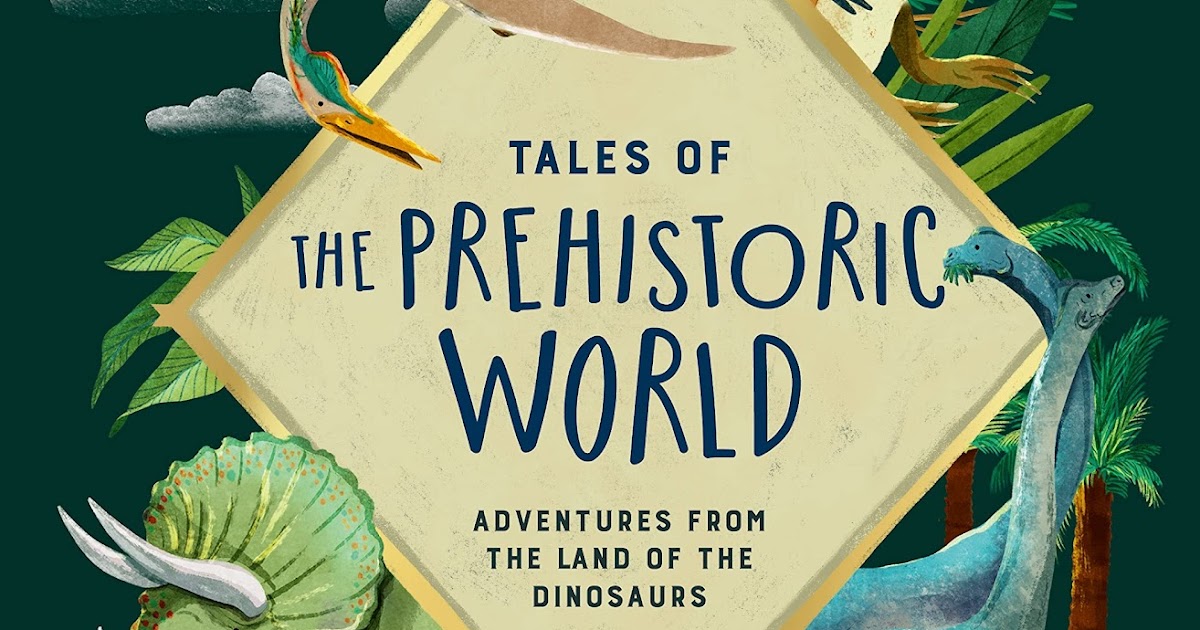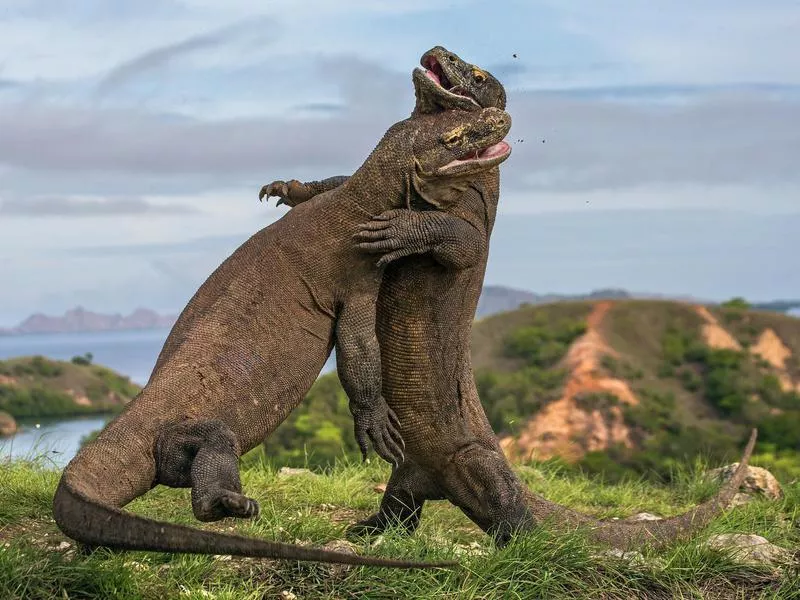
In the wake of the awe-inspiring era that once hosted majestic creatures like mastodons, giant ground sloths, saber-toothed cats, and the real-life counterparts of “Game of Thrones” dire wolves, our world has witnessed their unfortunate extinction since the conclusion of the last ice age approximately 11,700 years ago. However, the narrative of encountering prehistoric marvels is far from over. Today, numerous wildlife species continue to tread the earth, echoing the ancient past and preserving the essence of a bygone era when these beings roamed alongside our loincloth-clad ancestors.
While some of these enigmatic beings find sanctuary within the confines of zoos and protected nature preserves, safeguarded due to declining populations or endangered status, others still roam free in the wild—perhaps even gracing your own backyard with their timeless presence.
Whether glimpsed in the carefully curated spaces of conservation or encountered amidst the untamed wilderness, these living relics from the depths of history are bound to evoke a profound sense of wonder, connecting us to the untold stories of our planet’s ancient tapestry.
Gharial
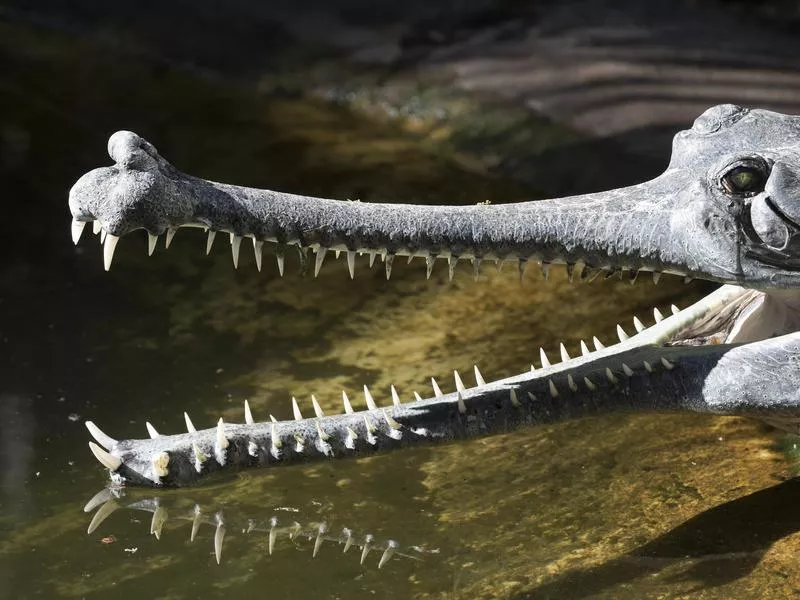
In the shadow of a bygone era that bore witness to the grandeur of mastodons, giant ground sloths, and the awe-striking saber-toothed cats—real-life counterparts to the fantastical dire wolves of “Game of Thrones”—we lament the somber truth of their extinction, marking the end of an epoch with the conclusion of the last ice age some 11,700 years ago. Yet, the saga of encountering prehistoric wonders persists, weaving its narrative through the present. In the footsteps of our loincloth-clad ancestors, certain wildlife species endure, embodying the essence of an ancient past.
Some of these enigmatic creatures dwell within the carefully orchestrated landscapes of zoos and protected nature reserves, shielded from the encroaching threat of dwindling populations or endangerment. Others roam freely in the untamed wilds, and perhaps, in the quiet corners of your very own backyard.
Whether glimpsed within the curated sanctuaries of conservation or encountered amidst the untethered embrace of nature, these living remnants from epochs long past carry with them an unparalleled sense of wonder, bridging the gap between the forgotten tales of our planet’s history and the beating heart of the present moment.
Komodo Dragon
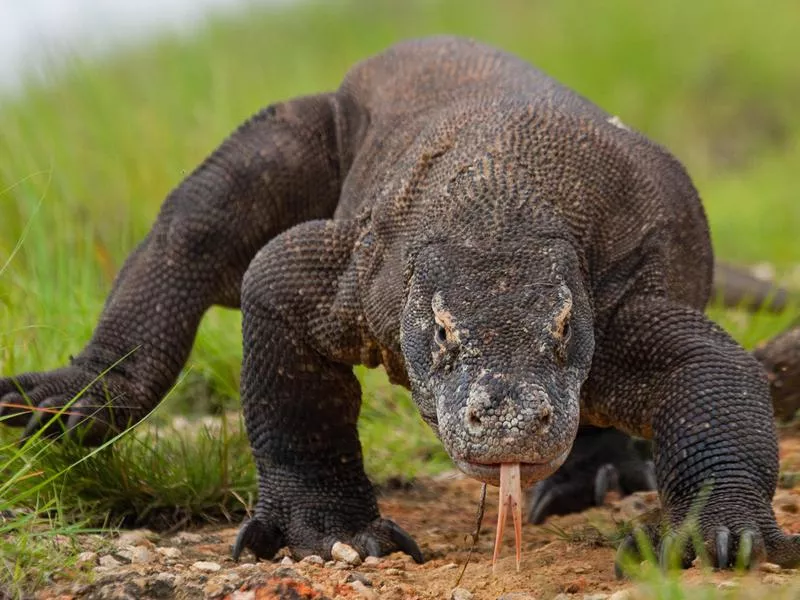
Venture into the intriguing origins of Komodo dragons, the formidable reptilian icons now synonymous with Indonesia. Surprisingly, recent scientific excavations have unveiled a treasure trove of Komodo dragon fossils in the far reaches of eastern Australia, unveiling a history dating back as far as four million years.
These colossal lizards, rivalling or even surpassing the weight of a human, command attention with a dual nature—both mesmerizing and menacing. Beyond their impressive stature, there’s a darker note to their reputation, as instances of Komodo dragons confronting humans have been documented. Adding an extra layer of caution, these giant reptiles harbor a hint of venom in their formidable arsenal.
For the intrepid souls undeterred by the tales of danger, a unique opportunity awaits. Embark on an unforgettable journey by engaging with various outfitters offering excursions to the Komodo National Park. Nestled within the enchanting embrace of small Indonesian islands, this park not only unveils the majesty of Komodo dragons but also presents a breathtaking tapestry of nature’s wonders, providing curious tourists with a blend of adventure and awe.
Shoebill Stork
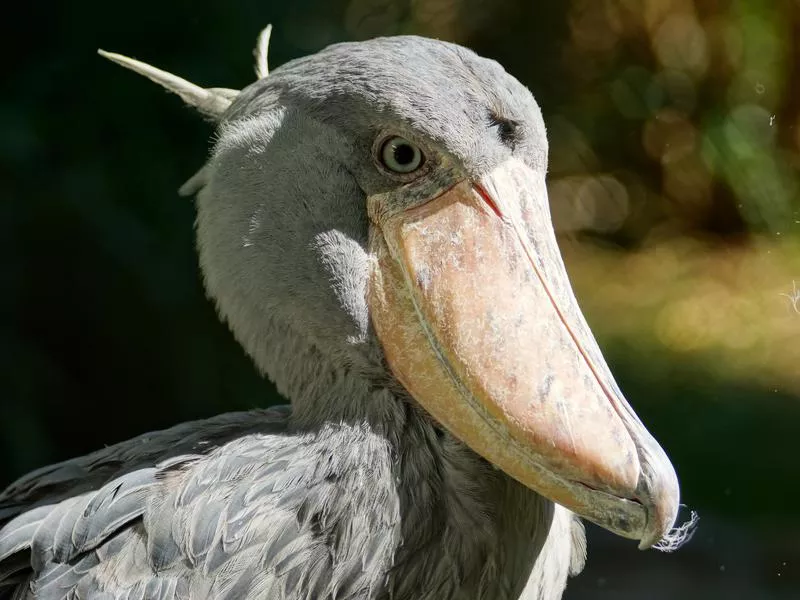
The enigmatic shoebill stork, shrouded in avian mystery, perplexes scientists as they grapple with the puzzle of its elusive avian relatives. Amidst the ambiguity, one consensus stands strong—the shoebill stork is an ancient marvel, defying the conventional timeline of its avian counterparts. Picture a creature with a grayish demeanor and a beak so substantial that it seems to have stepped out of the prehistoric landscapes immortalized by “The Flintstones.”
This avian relic, however, is not impervious to the challenges of the modern world. Classified as “vulnerable to extinction,” the shoebill stork faces the daunting threats of habitat destruction and poaching. Yet, a glimmer of hope awaits those intrigued by this living fossil.
Nestled within the protected sanctuary of the Mabamba Bay Wetland in Uganda, several outfitters extend invitations to immersive bird-spotting tours.
As you gracefully paddle through shallow lakes and ponds, reminiscent of prehistoric swamps, the line between past and present blurs, and for a fleeting moment, you might find yourself suspended in a timeless encounter with this ancient avian wonder.
Bactrian Camel
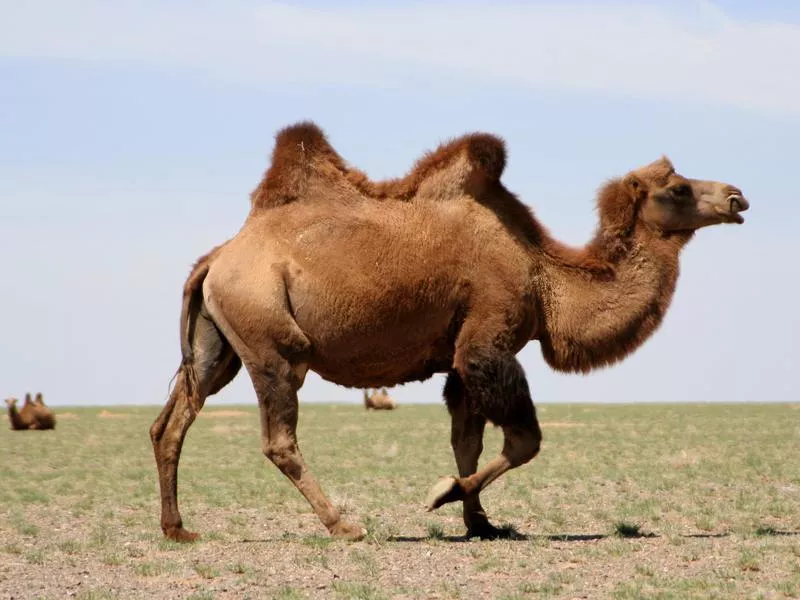
Unraveling the untold saga of camels, beyond their iconic role as one-humped desert nomads in the Middle East, lies a fascinating revelation. These resilient creatures trace their ancestry to the two-humped Bactrian camels, whose silent existence continues amidst the rugged vastness of the Gobi Desert in Mongolia, a living testament to a bygone era.
Imagine a creature resembling a fusion of Chewbacca and a llama, sculpted by the harsh hand of evolution over two million years to withstand extremes, from subzero temperatures to scorching heat. The distinctive dual humps of the Bactrian camel serve as reservoirs, storing vital fat that transforms into energy and sustenance during extended periods of arid deprivation—an adaptation that leaves us yearning for a fraction of their metabolic prowess.
Yet, the enigma of the Bactrian camel extends beyond its survival prowess. Classified as critically endangered in the wild, with a dwindling population of fewer than 1,000, these stoic beings are a poignant reminder of the delicate balance of nature. However, in the cultural heartland of Mongolia, domesticated Bactrian camels play an integral role, offering a bridge between tradition and survival.
For those seeking a truly unique adventure, the rugged landscapes of Mongolia beckon with camel-riding expeditions, a tactile connection to a living legacy. As an added spectacle, the annual Thousand Camels Festival in Umnugovi, Mongolia, held in early March, unfolds as a vibrant celebration, encapsulating the spirit of these magnificent creatures and the cultural tapestry they weave.
Echidna
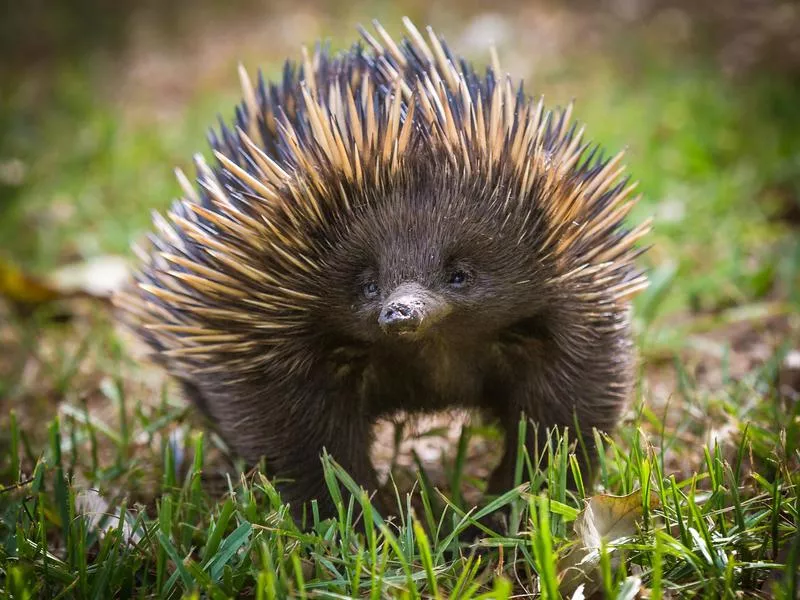
Embark on a whimsical journey into the realm of echidnas, where nature’s creativity knows no bounds. Picture a creature that defies traditional classifications, a magical blend reminiscent of a badger, a porcupine, and an anteater, all wrapped into one enchanting package. These monotremes, distant kin to the famed platypus, dance to the rhythm of their own evolutionary tune—they lay eggs, a charming departure from the conventions of live births.
Yet, encountering these elusive beings in the wild requires a quest. Nocturnal by nature, echidnas lead solitary lives in the spaced-out tapestry of their chosen habitats. A tinge of melancholy colors their story as several echidna species tiptoe on the edge of endangerment, a testament to the fragility of a lineage that has gracefully roamed the Earth for an astonishing 17 million years.
For those eager to witness the echidna’s charm up close, the canvas of New Zealand, Tasmania, and Australia paints a vivid picture. Seek out these captivating creatures in the heart of conservation efforts—whether it’s the Bonorong Wildlife Sanctuary in Hobart, Tasmania, the Australia Zoo in Queensland, or the iconic Taronga Zoo in Sydney.
Here, the unique and ancient echoes of echidnas weave seamlessly into the fabric of wildlife preservation, inviting you to witness the magic of a living legacy in a world where time and evolution intertwine.
Musk Oxen
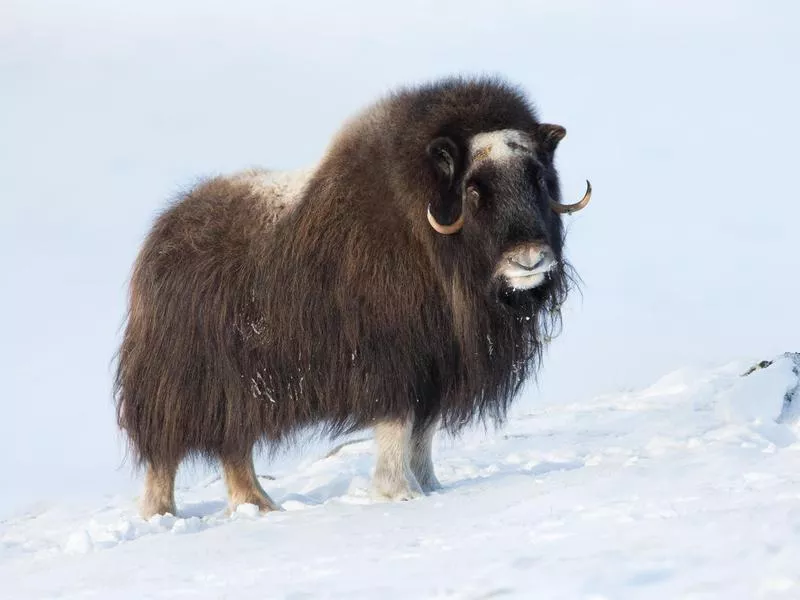
Prepare yourself for the extraordinary as you step into the captivating world of Musk oxen—a sensory adventure that transcends the ordinary. Picture this: the fall rutting season, a spectacle where bull Musk oxen engage in a mesmerizing clash of wills, hurtling towards each other with a force that not only shakes the ground but also fills the air with their distinct and, let’s be honest, pungent aroma.
These resilient beings boast a lineage that stretches back an astonishing 187,000 to 129,000 years—an ancient tale of survival against the odds. Once erased from the Alaskan landscape in the 1800s, Musk oxen staged a comeback in the 1930s, roaring back with a growing population that echoes their triumphant resilience. Today, Alaska serves as the stage for several thousand of these majestic creatures, though recent years have cast a shadow of concern on their numbers.
Venturing into the wild to witness Musk oxen in their element demands patience, yet Nome, Alaska, emerges as a mystical portal where these regal creatures freely roam near a quaint tundra town. Nome, not just the symbolic endpoint of the thrilling Iditarod dogsled race in early-to-mid March, but a living canvas where Musk oxen and the spirit of the wild converge.
Amidst this enchanting experience, don’t miss the hidden treasure of Nome—local vendors offering qiviut. This delicately soft underwool, a gift from captive or wild Musk oxen, whispers tales of rarity and warmth, outshining even the allure of cashmere. Immerse yourself in the fascinating world of Musk oxen, where each moment is a brushstroke painting a vivid picture of resilience, wild beauty, and the timeless dance of survival.
Vicuña
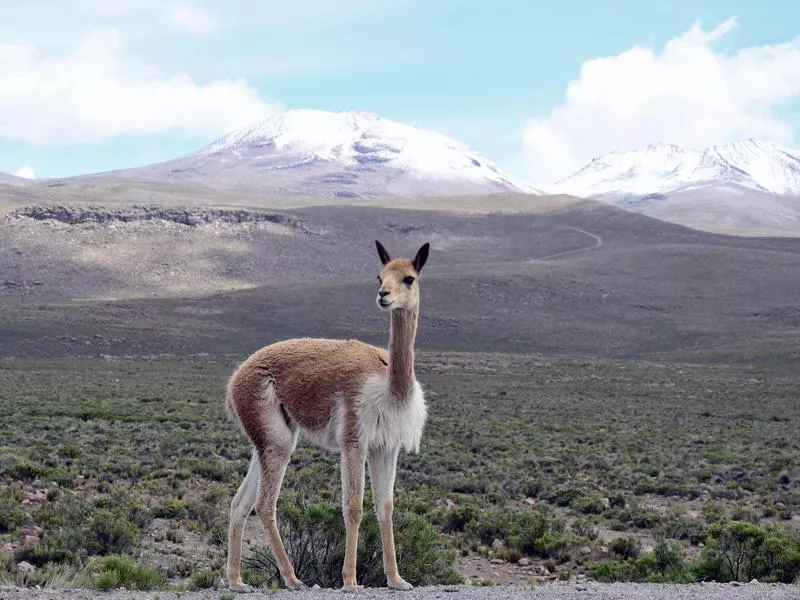
Step into the enchanted realm of sumptuous wool, where the vicuña emerges as the ancient virtuoso, weaving a tale that transcends time. Picture this prehistoric luminary as the progenitor of the modern-day alpaca, sharing a striking resemblance yet adorned with a unique color palette—a regal white undersurface juxtaposed with a distinctive brown saddle, an artist’s brushstroke on the canvas of its majestic form.
Once the revered treasure of the Incas, the vicuña faced a perilous journey to the brink of extinction following the fall of the Inca empire, a poignant chapter in its tumultuous history. Yet, against the odds, a narrative of resilience unfolds, thanks to the unwavering dedication of conservationists. Today, the vicuña roams freely in the wild, a testament to the triumph of conservation efforts and the restoration of balance.
Embark on an odyssey along the rustic roads of south-central Peru, where the ethereal presence of vicuñas graces the landscape. As you seek these majestic creatures, venture into the embrace of Huascarán National Park, a hidden sanctuary north of Lima cradled within the world’s highest tropical mountain range. Here, a tapestry of wonders unfolds—spectacled bears, Andean condors, and the captivating Queen of the Andes flower. It’s a symphony of treasures, where each note resonates with the spirit of the wild, creating an unforgettable melody in the heart of nature’s grandeur.
Chambered Nautilus
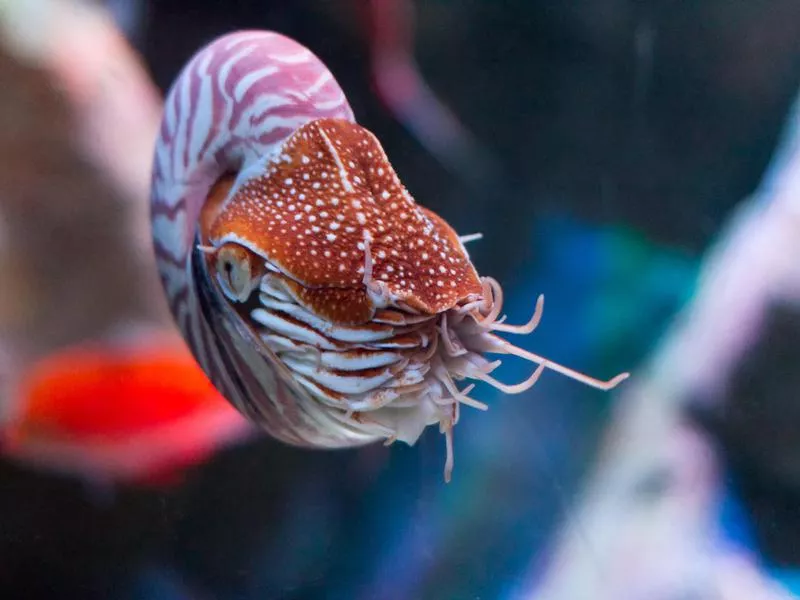
Embark on a deep-sea voyage to the mysterious waters around Australia and Indonesia, where the chambered nautilus, a living enigma, holds its underwater court. Yet, should your journey lead you to the captivating world of the illustrious Monterey Bay Aquarium in California, brace yourself for an encounter with these ancient marvels up close.
Visualize the unearthly beauty of these corkscrew-shaped wonders, a living symphony echoing the whispers of time. These creatures, etched in the fossilized record for an awe-inspiring 500 million years, present a captivating tableau of evolution, their appearance remaining an unyielding link between antiquity and the present.
Breeding these captivating beings within the confines of captivity poses a conundrum, a reflection of the broader challenges faced by species navigating the delicate dance of survival. Yet, against the backdrop of declining populations in the wild—a familiar theme in the unfolding narrative of our planet—the Monterey Bay Aquarium stands as a pioneer in the exploration of uncharted waters. Do you sense the recurring rhythm in the story of conservation? In a watershed moment during the spring of 2018, researchers etched a triumph into the annals of aquatic history by successfully nurturing the first baby nautiluses in captivity. A testament to the aquarium’s commitment to unraveling the mysteries of the deep and ensuring that the wonders hidden beneath the ocean’s surface endure for generations to come.
Babirusa
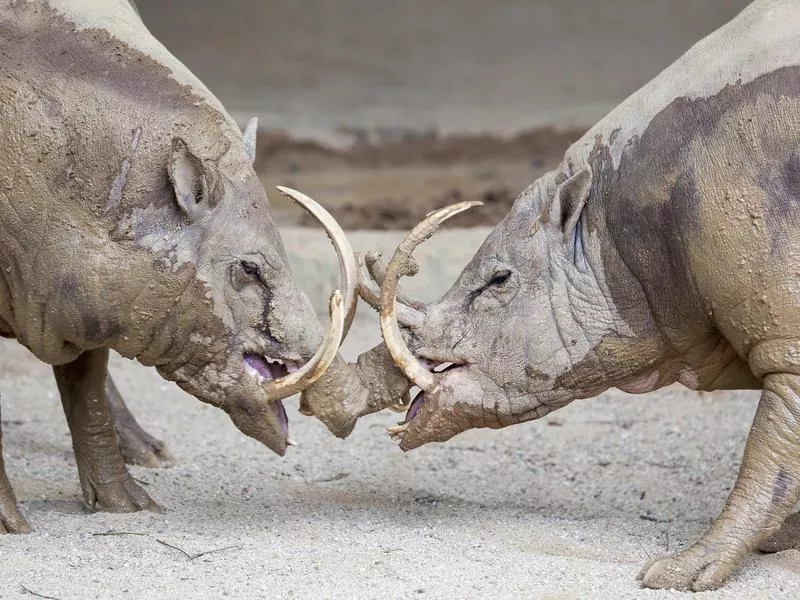
Enter the realm of the babirusa, a creature that defies the mundane image of your everyday pig, spicing things up with a touch of quirkiness. Here’s the twist: the males boast tusks of epic proportions that defy gravity, sprouting upward through their snouts and gracefully curving back towards their heads. If left unchecked, these formidable tusks may even stage a rebellious pierce through their foreheads. Imagine a scene straight out of fantasy—an orcish pig, with lower tusks following suit, completing the captivating spectacle.
These enigmatic beings have graced the canvas of Indonesian cave paintings, leaving an indelible mark that transcends a staggering 35,000 years. Now, fast forward to the present, where the stage is set for a truly unforgettable adventure. Various tour operators beckon with the promise of babirusa-watching safaris, inviting intrepid souls to delve into the wild wonders of the Nantu Forest and Tangkoko Nature Reserve in Indonesia.
Here, in the untamed embrace of nature, the babirusa unveils its ancient charm, a captivating fusion of quirks and charisma. As you navigate through landscapes teeming with life, you become part of a story that echoes through the ages, where each babirusa proudly wears its unique tale, inviting you to witness the magic of a creature that defies the ordinary and beckons you into a world where surprises lurk around every corner.
Tapir
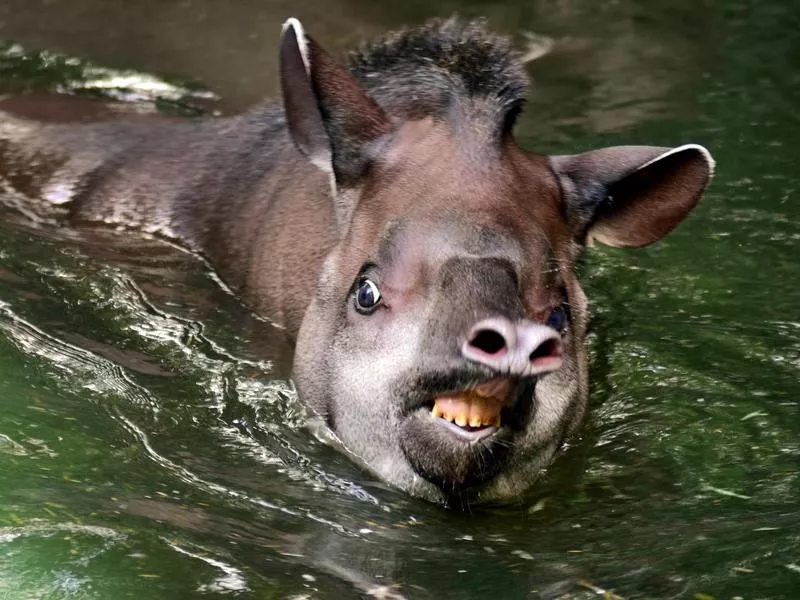
Dive into the captivating world of tapirs, creatures that, much like babirusas, might appear pig-like at first glance, but a singular feature sets them apart—a short, elephant-like proboscis adeptly employed for lassoing food into their mouths. Yet, this isn’t the end of their charm; tapirs, with their elongated snouts, double as underwater explorers, using their proboscises as snorkels during leisurely strolls beneath the water’s surface—a favorite pastime that adds a unique aquatic flair to their routine.
While their exterior might evoke porcine vibes, tapirs share a surprising genetic connection with horses and rhinoceroses, reshuffling the deck of evolutionary expectations. Journey back through time to the Miocene epoch, an era that unfolded a staggering 23 million years ago, to witness the origins of tapirs—a species with a rich and proud history etched into the fossil record. Over time, they’ve evolved into a diverse array of species, though today, only five tapir species remain, scattered across Asia, Central, and South America.
For those eager to witness these enchanting beings in their natural habitat, the spotlight falls on the untamed landscapes of Corcovado National Park in the breathtaking Costa Rica. Here, against a backdrop of awe-inspiring scenery, wild tapirs roam freely, offering a rare glimpse into their world. Venture deeper into the heart of the Amazon rainforest, and you might just uncover these elusive creatures—nature’s well-kept secrets waiting to be discovered. Keep your eyes peeled, for in the intricate tapestry of the Amazon, surprises await those who dare to look.
White Rhinoceros
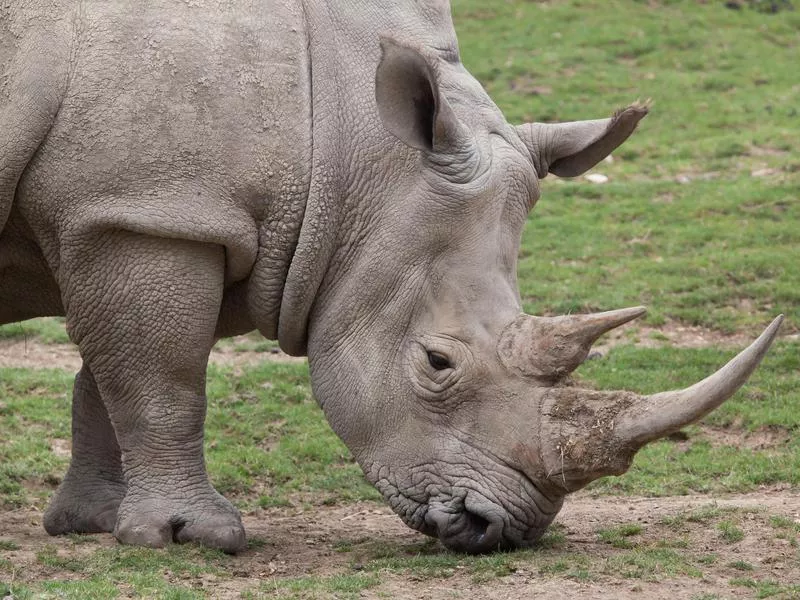
Embark on a journey into the fascinating world of rhinos, where the ancient white rhinoceros species unravels a poignant tale of two distinct subspecies. Meet the northern white rhino, a species hanging by a thread with just two surviving individuals, both female, residing in a Kenyan reserve. In an exclusive offering by Unforgettable Travel, you can embark on a special tour to witness these last remaining individuals—an experience that intertwines conservation urgency with a personal connection to these majestic creatures.
Contrastingly, the southern white rhino emerges as a beacon of conservation success. With a global population surpassing 17,000, this subspecies proudly wears the label of “Near Threatened” by the IUCN. Yet, the looming threat of poaching persists, driven by the demand for rhino horns in traditional Asian medicinal practices. Conservationists, faced with this menace, have taken bold steps, from employing armed guards around vital individuals to the controversial removal and destruction of rhino horns, aiming to dismantle the incentive for poaching.
For a captivating rendezvous with the southern white rhino, Kruger National Park in South Africa stands as a living testament to their resilience. Here, amidst the sprawling landscapes, a thriving population of these majestic creatures roams freely, making Kruger National Park a haven for wildlife enthusiasts and a premier safari destination in Africa. Brace yourself for an extraordinary adventure, where every encounter with iconic African wildlife becomes a brushstroke in the vivid canvas of nature’s drama, and the story of the rhino species unfolds in a way that is both captivating and uniquely unforgettable.
Wobbegong Shark
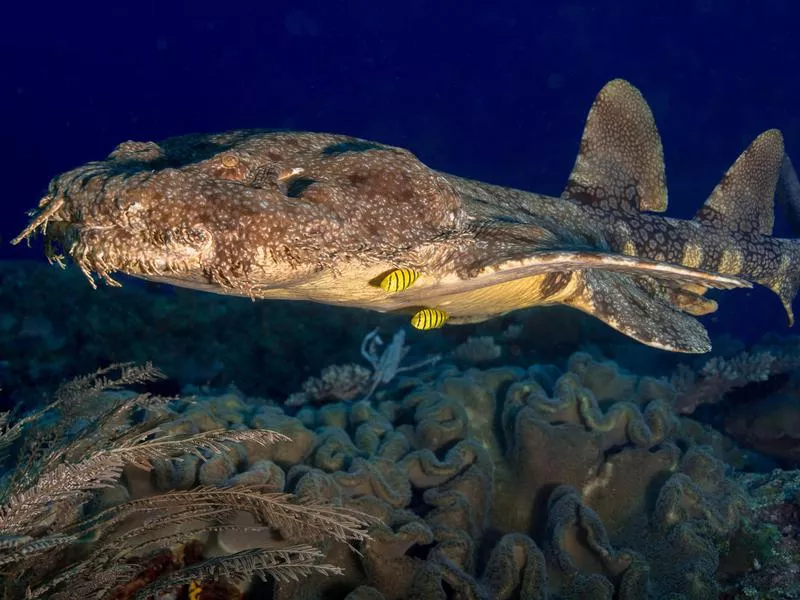
Dive into the enchanting world of tropical Pacific reefs, where the elusive wobbegong shark awaits the discerning observer. Cunning masters of disguise, these sharks artfully employ flattened bodies, frilly edges, and intricate camouflage patterns, seamlessly melding with algae-covered rocks as they orchestrate a dance of concealment. Yet, unveil their smooth white bellies during a graceful swim, and the wobbegong’s presence transforms into an unmistakable spectacle.
These ancient creatures, tracing their lineage back to the Miocene epoch around 11 million years ago, persist in a couple of distinct species. Most wobbegongs, being of modest size, pose minimal threat to humans. Despite a handful of reported wobbegong shark encounters, none have resulted in fatalities, with such interactions likely stemming from accidental encounters during dives or inadvertent closeness.
For those seeking an encounter with these oceanic maestros, a reef dive might provide the chance of a lifetime (though a respectful distance is always advised). Alternatively, venture into the Sydney Aquarium in Australia, where a unique opportunity awaits. Even without prior diving experience, guided shark swims offer a captivating window into the mysterious world of the wobbegong, turning the ordinary into the extraordinary in the controlled embrace of the aquarium’s depths.
Horseshoe Crab
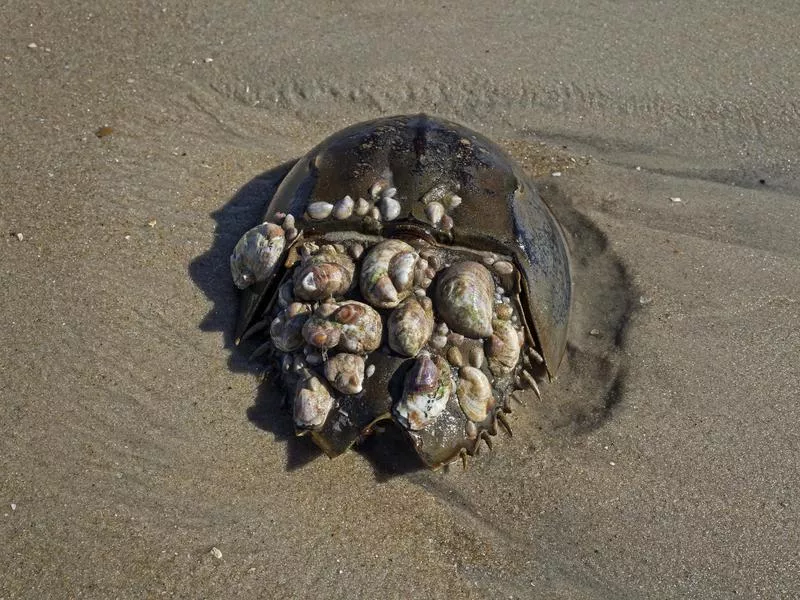
Embark on a journey back in time to the ancient era of horseshoe crabs, remarkable survivors that have maintained their form virtually unaltered since the extraordinary Ordovician period—an astonishing 445 million years ago. Picture a world where continents had yet to carve their outlines, and a singular supercontinent, Gondwanaland, cradled these enigmatic creatures along its shores in a symphony of abundance.
Fast forward to the present-day, and the shores of Delaware Bay transform into a mesmerizing stage each May. Witness millions of horseshoe crabs, their clunky, helmet-shaped figures, returning with a purpose—to breed. This spectacle, the world’s largest concentration of horseshoe crabs, echoes the resilience and timeless presence of this ancient species.
Yet, the drama doesn’t end with the horseshoe crabs. Shift your focus, and an elusive cast of characters takes center stage. Enter the realm of rarely-seen shorebirds—the Red Knot and Ruddy Turnstone—on a deliberate journey during their annual northward migration. Their destination unfolds on the shores of Delaware Bay, a strategic pause to partake in a banquet of horseshoe crab eggs. This rendezvous adds a layer of complexity to the narrative, where the interplay of species creates a living tapestry woven with threads of migration, feasting, and the enduring legacy of the horseshoe crab.
Polar Bear
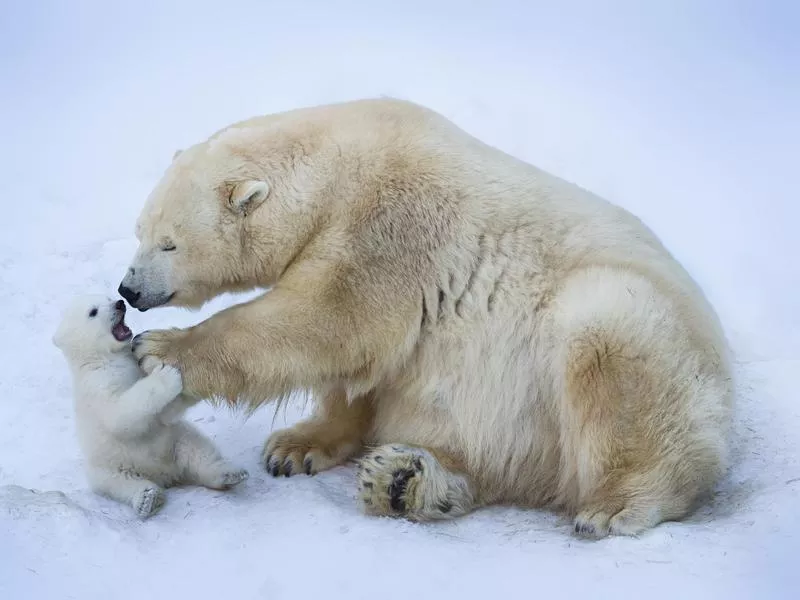
Embark on a journey to the Arctic, where the iconic polar bear takes center stage—a creature that, upon closer inspection, appears as if it’s strolled in from the frozen landscapes of the last ice age, a majestic wanderer echoing the tales of ancient eras.
Yet, the narrative of the polar bear predates even those frozen epochs. In 2010, a fossilized jawbone unearthed in arctic Norway unveiled a stunning revelation—the presence of these majestic beings around 120,000 years ago. Since that ancient era, polar bears have gracefully roamed the expansive white canvas of the North, becoming timeless symbols of the Arctic’s untamed beauty.
For those craving an extraordinary encounter with these rare and magnificent creatures, the stage is set in Churchill, Manitoba, Canada. This town emerges as a haven for polar bear enthusiasts, offering a front-row seat to witness these majestic beings. In a unique twist of tourism, outfitters in Churchill provide special raised and reinforced tundra buggies. These ingeniously designed vehicles not only ensure your safety but also offer an up-close and personal perspective, allowing you to observe these predators in their natural habitat—an unforgettable experience that blends adventure, conservation, and the living legacy of the Arctic’s crowned monarchs, the polar bears.
Tuatara
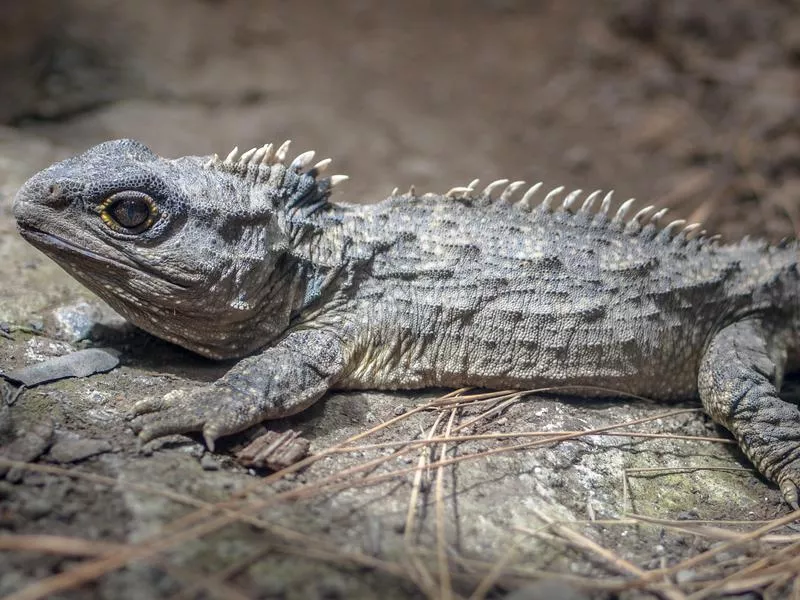
Step into the realm of the tuatara, a lizard that may initially resemble your everyday iguana but conceals a fascinating secret beneath its exterior. This ancient reptile, dating back to the same era as the dinosaurs around 225 million years ago, transcends its outward appearance.
Explore the tuatara’s living testament to ancient history, where clues are etched into its body. Unveil the presence of a primitive third eye perched atop its head—a subtle feature sometimes obscured by scales in adulthood. Scientists speculate this archaic light sensor plays a pivotal role in orchestrating the tuatara’s daily and seasonal biological functions. Adding to its mystique, tuataras possess the ability to hear sounds despite lacking external ears—a remarkable similarity to how fish perceive sounds underwater.
Journey to the enchanting landscapes of New Zealand, the exclusive domain of the tuatara. Although elusive in the wild, residing primarily on predator-free islands, these captivating creatures come to life in New Zealand zoos. Experience a close encounter with the tuatara’s ancient charm at venues like the National Aquarium of New Zealand in Napier or Zealandia in Wellington, where the layers of time unfold in a captivating display.
Cassowary
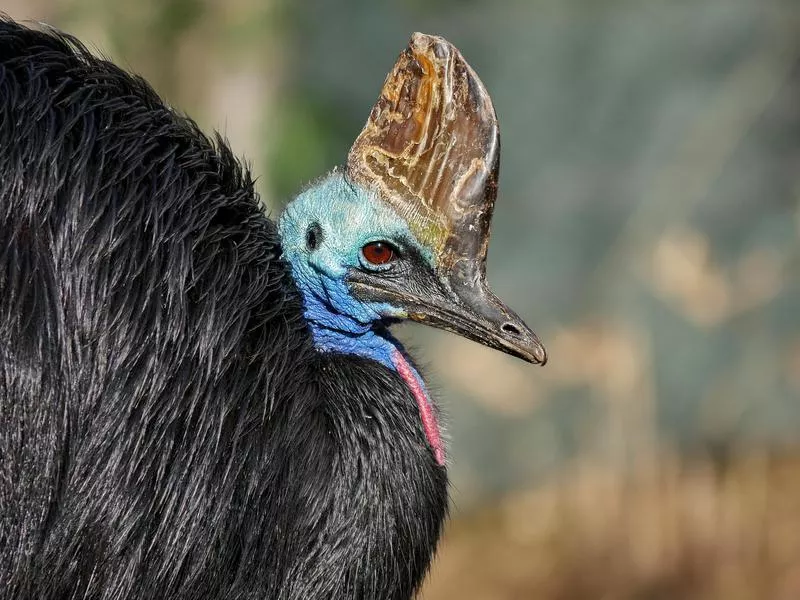
Enter the world of cassowaries, the striking avian counterparts to “Jurassic Park” velociraptors. These tall, vividly colored, bipedal birds boast a formidable slab-like ornament atop their heads and sport sharp, dagger-like claws on their feet. Fascinatingly, cassowaries, on rare occasions, have been known to attack and, even more rarely, cause harm to humans.
Belonging to the family of ratites—large, flightless birds—cassowaries and emus have graced the Earth for approximately 60 million years. In the present day, these intriguing birds can be found in the lush landscapes of northern Queensland and Papua New Guinea.
For the adventurous souls seeking a glimpse of these captivating creatures, the enchanting forest trails of Cape Tribulation, Daintree, and Mission Beach in Australia beckon. Guided birdwatching tours offer the chance to spot cassowaries, provided you approach with luck, silence, and caution. Remember, in the presence of these majestic birds, maintaining a respectful distance and refraining from feeding them is key to a harmonious coexistence.
Chinese Giant Salamander
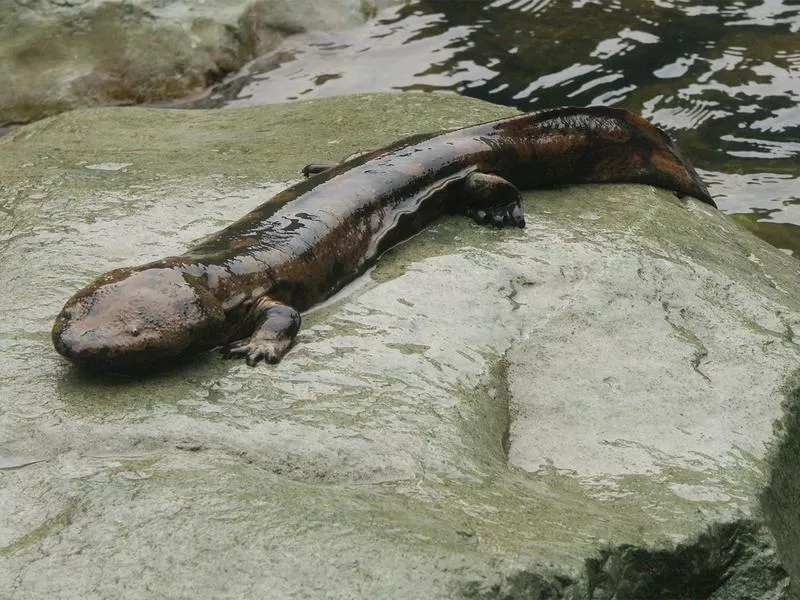
Venture into the realms of reality reminiscent of “Jurassic Park,” where creatures from ancient times continue to roam the earth. Among these living relics, the Chinese Giant Salamander emerges as a captivating figure, with an estimated age of 170 million years. Hold your breath, for this colossal amphibian claims the title of the world’s largest, surpassing some people in size, reaching up to 110 pounds and an astonishing six feet in length.
Once thriving in the frigid mountain streams of China, these giant salamanders now face the brink of extinction due to poaching for food and traditional medicine. Yet, a glimmer of hope remains.
In the heart of the Prague Zoo, meet Karlo, a living testament to the ancient lineage of the Chinese Giant Salamander. Weighing an impressive 77 pounds, Karlo stands as one of the world’s largest of his kind, a majestic ambassador of a bygone era. As you marvel at this incredible creature, envision a future where the legacy of the Chinese Giant Salamander endures for decades to come, a resilient beacon of our planet’s rich and ancient biodiversity.
Chamois
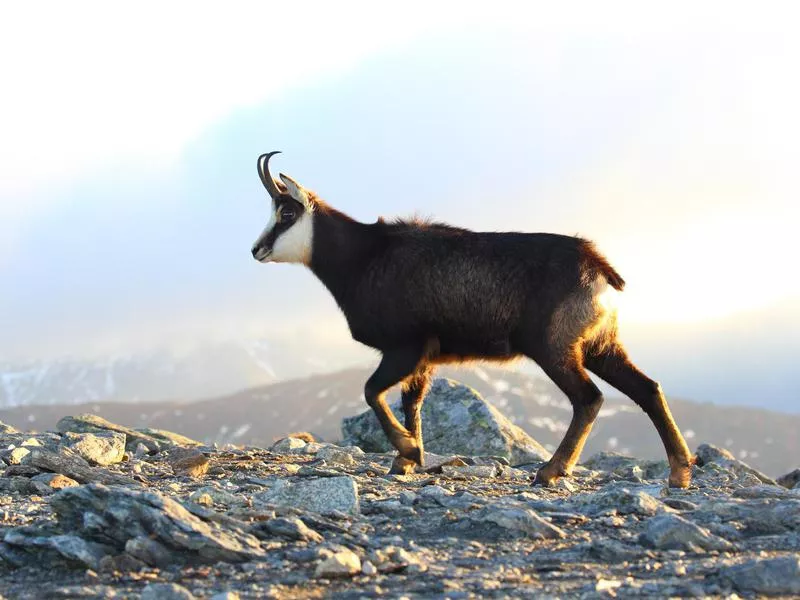
Venture into the realms of reality reminiscent of “Jurassic Park,” where creatures from ancient times continue to roam the earth. Among these living relics, the Chinese Giant Salamander emerges as a captivating figure, with an estimated age of 170 million years. Hold your breath, for this colossal amphibian claims the title of the world’s largest, surpassing some people in size, reaching up to 110 pounds and an astonishing six feet in length.
Once thriving in the frigid mountain streams of China, these giant salamanders now face the brink of extinction due to poaching for food and traditional medicine. Yet, a glimmer of hope remains.
In the heart of the Prague Zoo, meet Karlo, a living testament to the ancient lineage of the Chinese Giant Salamander. Weighing an impressive 77 pounds, Karlo stands as one of the world’s largest of his kind, a majestic ambassador of a bygone era. As you marvel at this incredible creature, envision a future where the legacy of the Chinese Giant Salamander endures for decades to come, a resilient beacon of our planet’s rich and ancient biodiversity.
Whale Shark
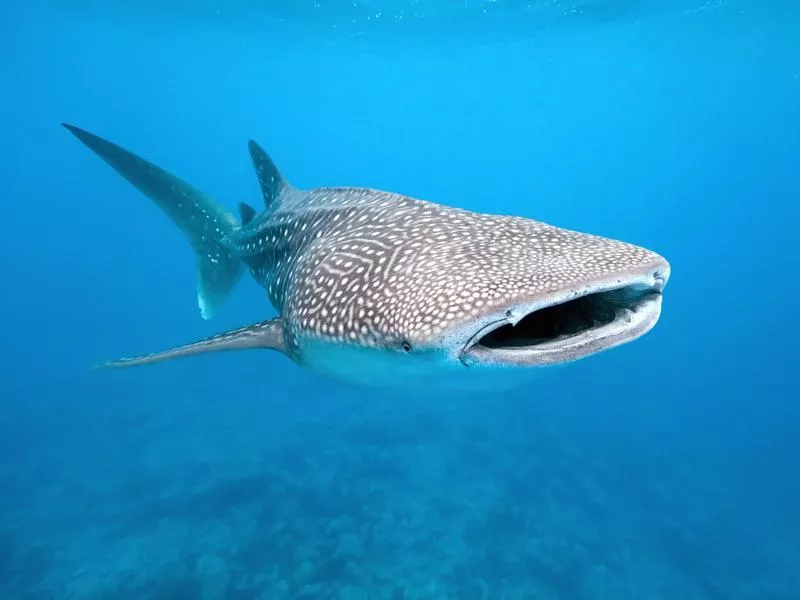
Dive into the intriguing world of the “whale shark,” a creature whose name is a bit of a misnomer. Contrary to expectations, this majestic giant isn’t a whale at all but proudly claims the title of the world’s largest shark and, by extension, the largest fish, having gracefully roamed the oceans for at least 28 million years.
While these colossal sharks navigate the equatorial waters, encountering them isn’t as straightforward as their widespread presence implies. A boat rental becomes your first step into the realm of these elusive creatures. However, given their endangered status, spotting them even amidst the vastness of the ocean remains a considerable challenge.
For a more accessible encounter, set your sights on the Georgia Aquarium in Atlanta. Here, within the confines of captivity, reside some of the world’s only whale sharks. What’s more, you can elevate the experience by swimming alongside these gentle giants for a fee. Rest assured, the whale shark, a filter feeder, poses no danger to humans—opening a door to an extraordinary adventure within the safe and captivating waters of the Georgia Aquarium.
Lake Sturgeon
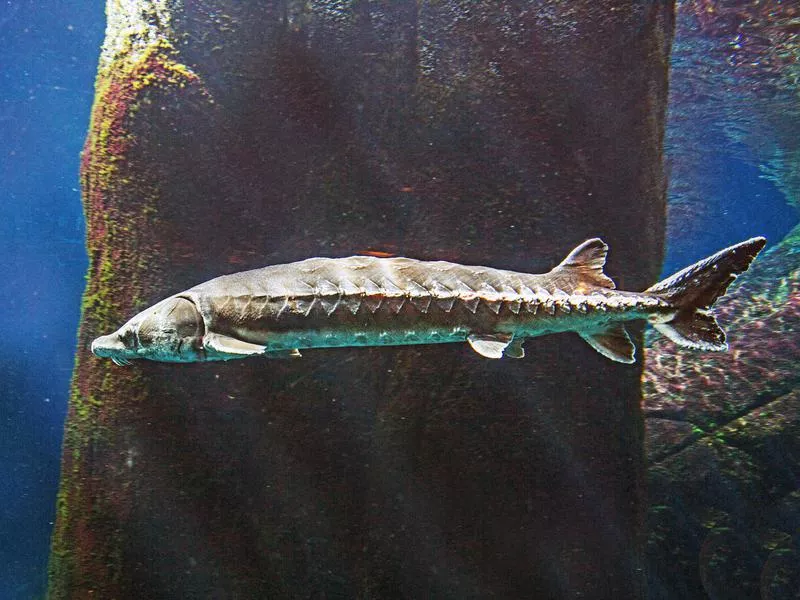
Delve into the aquatic wonders of the lake sturgeon, an ancient fish that once shared the waters with dinosaurs, making its debut on the scene a staggering 150 million years ago. Remarkably, these creatures continue to navigate the waterways of the United States, adding a touch of prehistoric charm to contemporary landscapes.
The lake sturgeon isn’t just an age-old survivor; it boasts a peculiar charm of its own. Devoid of scales, its body features only rubbery skin and a few rows of bony scutes, growing to lengths exceeding 7 feet and tipping the scales at a whopping 300 pounds. Imagine the awe-inspiring sight as this colossal fish glides by while you dip your toes into a lake this summer!
Much like their whale shark counterparts, lake sturgeon populations face challenges, witnessing a decline. However, an enchanting encounter awaits you at the Shedd Aquarium along Chicago’s Lake Michigan coastline. Here, the aquarium not only showcases these fascinating creatures but offers an interactive sturgeon touch pool, inviting you to feel the unique texture of the creature’s bony scutes for yourself. A journey into the aquatic past, seamlessly blended with a touch of hands-on discovery, awaits those who venture to explore the mysteries of the lake sturgeon at Shedd Aquarium.
Okapi
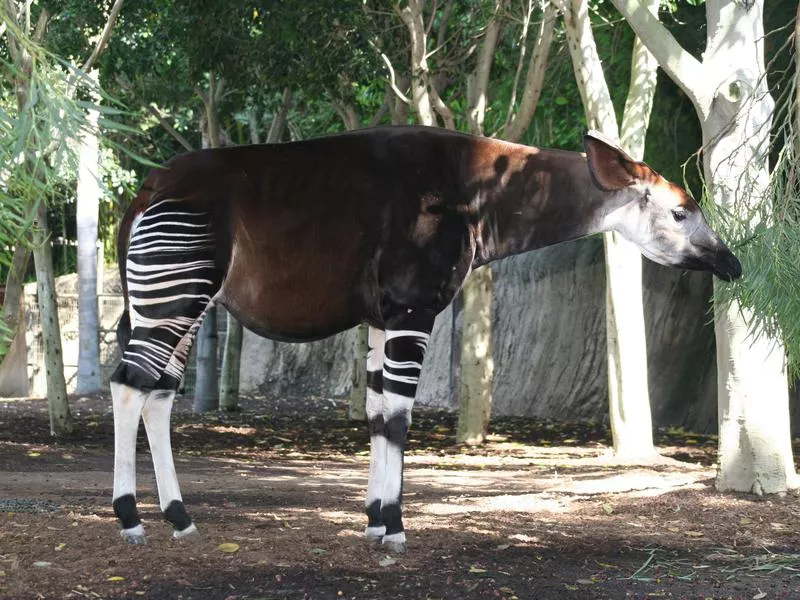
Dive into the enigmatic world of the okapi, a creature with a somewhat mysterious presence in the fossil record, leaving us with sparse information. What scientists do unanimously agree on is the age-old nature of these beings, potentially making them the oldest mammals still gracing the Earth. Adding to their intrigue, okapis boast a peculiar appearance, resembling a captivating blend of deer, zebra, and giraffe—indeed, they stand as the only living relative of the latter.
These creatures evolved to lead solitary lives in the jungle, where a lengthy neck could easily become ensnared in the dense foliage. Such is their elusiveness that Western scientists were blissfully unaware of their existence until the turn of the 20th century.
While the Okapi Wildlife Reserve in the Democratic Republic of Congo once offered the chance to witness okapis in their natural habitat, a series of perilous encounters has rendered that experience less advisable currently. Fear not, for a multitude of zoos worldwide, partnering with the Okapi Wildlife Reserve, now extend the opportunity to marvel at these captivating beings. As you embark on a journey through these zoos, discover the allure of the okapi—a living relic, shrouded in mystery, waiting to captivate audiences around the globe.
Saiga Antelope
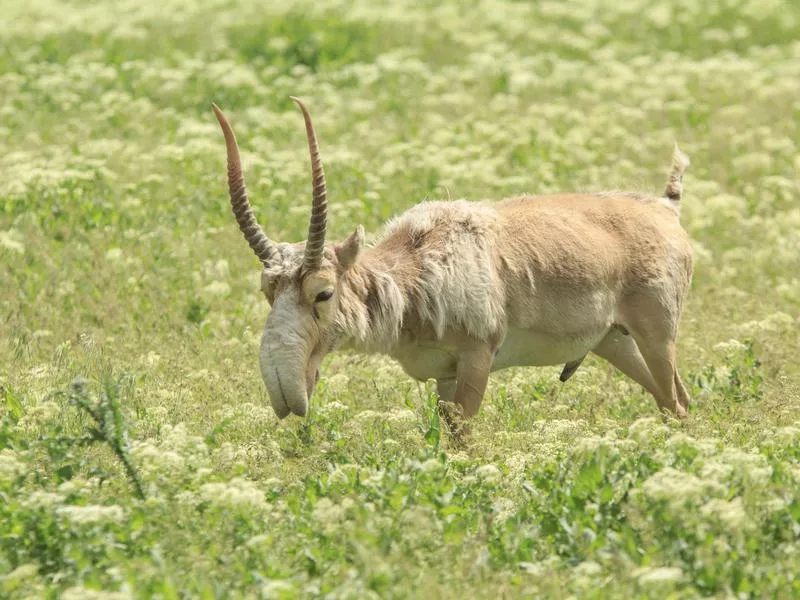
Enter the realm of peculiar creatures, and you’ll encounter the saiga antelope—an oddity that bears more resemblance to a pronghorn than a pig, and intriguingly, it is kin to the pronghorn.
Once roving across the northern hemisphere during the Pleistocene, the saiga antelope’s tale takes a somber turn with the passage of time. Regrettably, their presence dwindled after the Pleistocene era, fading from North America and surviving only in scattered pockets across central Asia today.
Recent times have witnessed ominous concerns, with mysterious die-offs casting a shadow over these creatures. The saiga antelope now stands at the brink of peril, labeled as critically endangered with a mere 50,000 individuals remaining, as per the IUCN. Encountering these enigmatic beings proves to be a rare feat; few zoos house them, and witnessing them in the wild is an even greater challenge. Yet, a glimmer of hope persists at the Askania Nova biosphere reserve in Ukraine, where a small herd gracefully moves across the landscape—an elusive spectacle in the world of the saiga antelope.
Alligator Gar

Embark on an aquatic adventure into the realms of the freshwater alligator gar, a creature that demands both awe and vigilance when traversing the waters of the southern U.S. While these mighty fish currently harbor no threat to humans (at least, not yet), their formidable presence echoes that of their namesake, the alligator, boasting flat snouts adorned with razor-sharp teeth and a robust body size that can reach a staggering 300 pounds.
This captivating aquatic enigma shares an ancient lineage, navigating the waters alongside dinosaurs, carrying a history that spans a jaw-dropping 100 million years. For those seeking an immersive encounter with the alligator gar, beyond the serene landscapes of southern waterways, the Tennessee Aquarium emerges as a distinguished sanctuary. Within its depths, a spectacle unfolds—a rare and mesmerizing all-white alligator gar, a resident that adds an extra layer of mystique to the underwater narrative. Prepare to be spellbound by the timeless allure of the freshwater alligator gar at the Tennessee Aquarium.
Caribou
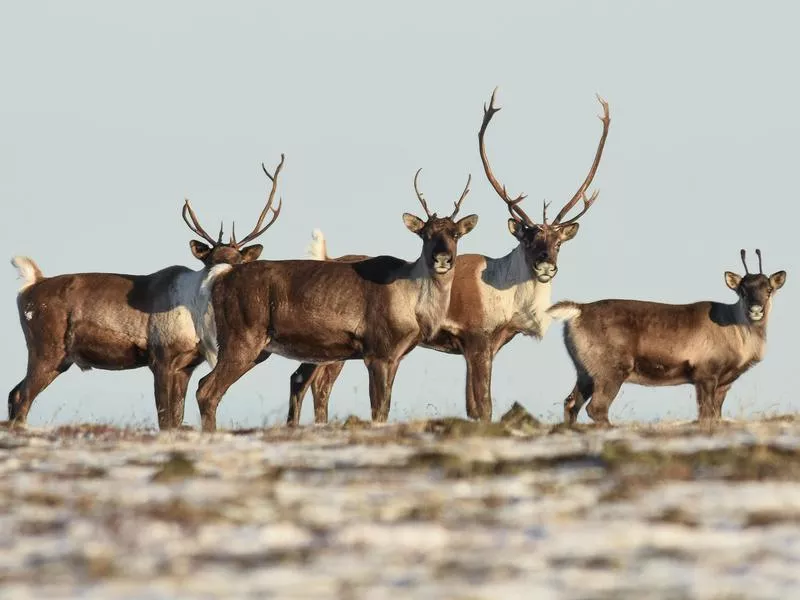
Caribou look like they walked straight out of the ice age — and indeed, they did. These unique animals evolved as long as two million years ago. Caribou were already present by the time humans arrived to cross the Bering land bridge and were surely a big part of their diets, just as they are today for Native Alaskans.
One of the really unique things about caribou is that they’re the only species of deer in which females also grow antlers. They’re usually not as big as the male’s ornate head wear, but females do keep them throughout the winter to guard pits in the snow that they’ve dug to get to their food. Then, in the springtime, they fall off.
Caribou can be found in remote areas throughout Alaska and Canada. One of the best ways to see them, however, is by taking a park-operated bus trip through Denali National Park. This massive park is home to a resident herd of caribou that are often spotted from the road. Keep an eye out for Dall sheep and brown bears as well, since these two species have also been here since the the last ice age.
Siberian Musk Deer
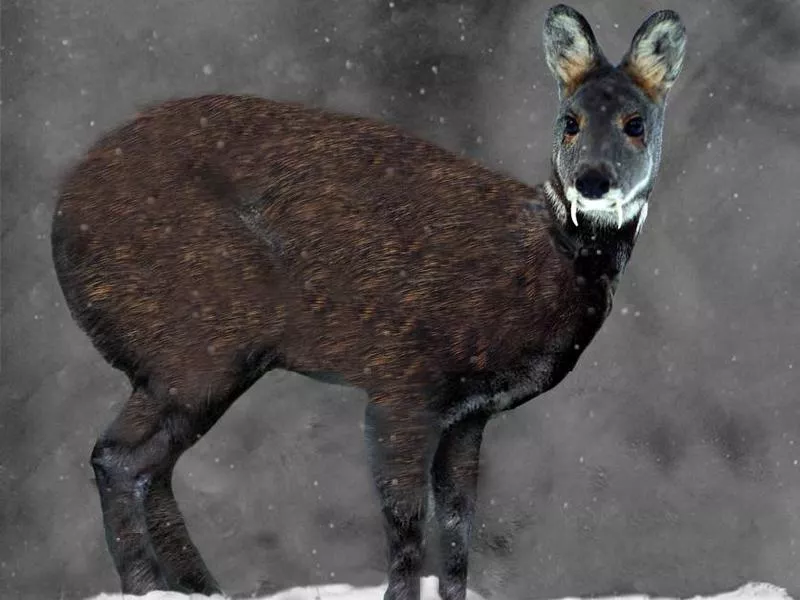
The untamed wilderness of northeastern Asia hides a secret: a diminutive deer with an unexpected feature – 4-inch-long fangs, earning it the intriguing moniker of the “vampire deer.”
Meet the Siberian musk deer, a herbivore with a fearsome appearance. Despite their menacing tusks, these creatures are strict vegetarians, using their elongated canines solely for confrontations as they lack the antlers typical of their distant relatives.
While Siberian musk deer are not currently endangered, the shadow of extinction looms as they face the threat of poaching for their prized musk glands, a sought-after commodity on the black market. It would be a loss to the natural world, considering these creatures have gracefully roamed the Earth for approximately three and a half million years. Although rare and elusive in their forest habitats, you can catch a glimpse of two male musk deer at Ranua Wildlife Park in the enchanting Finnish Lapland.
Sandhill Crane
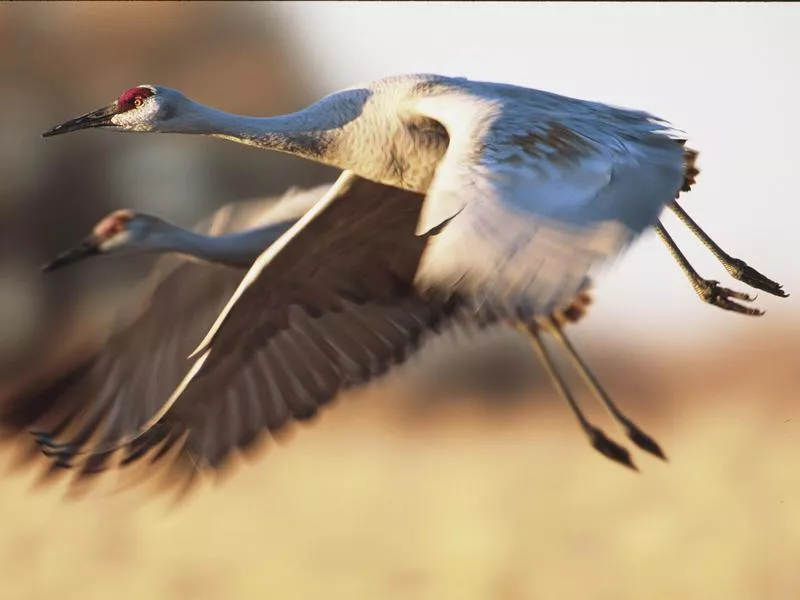
In the avian realm, sandhill cranes stand tall, their graceful figures punctuated by legs that extend far behind when in flight, reminiscent of mythical dragons soaring through the skies. While their presence may seem commonplace, these birds hold a hidden antiquity, with fossils dating back at least two-and-a-half million years.
As the seasons shift, the sandhill cranes embark on an awe-inspiring migration to their Arctic breeding grounds. Kearney, Nebraska, emerges as a pivotal stopover, hosting over half a million of these majestic birds. Here, amidst cornfields, they refuel for the impending long journey. Then, as if prompted by an enigmatic signal, the entire assembly takes flight simultaneously—a spectacle that unfolds as one of the grandest shows in the wildlife realm.
Walrus
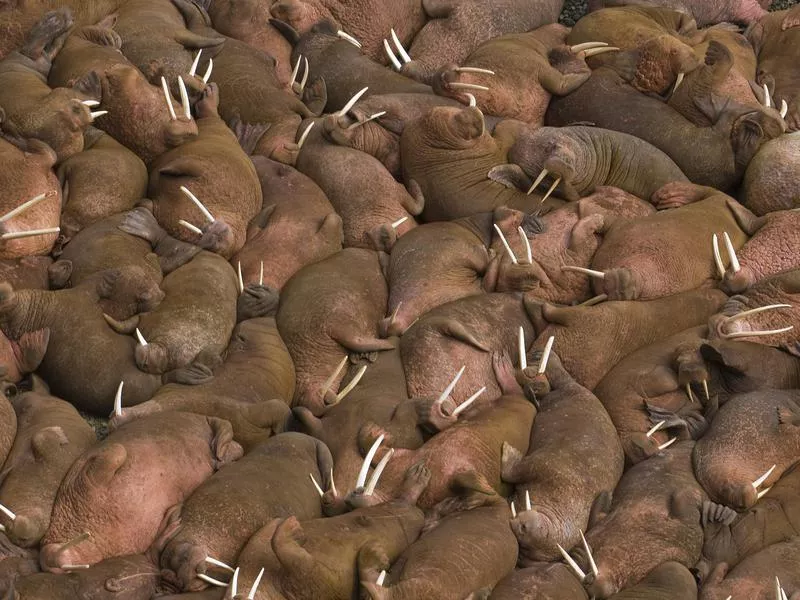
In the enchanting depths where the sea floor reveals its hidden wonders, picture an encounter with walruses – oceanic couch-potatoes adorned with lengthy whiskers and curiously human-like mouths. With a lineage stretching back some 600,000 years, these tusked behemoths elegantly navigate the ocean depths, feasting on clams and crabs, showcasing an unmatched aquatic prowess.
From May to August, immerse yourself in the mesmerizing theater of walrus haulouts. Here, these regal beings assemble on the shore, their commanding tusks echoing dominance in the pursuit of companionship. It’s a captivating spectacle best appreciated from a respectful distance, safeguarding the sanctity of their age-old rituals. Embark on an Alaskan wilderness odyssey, aided by air taxis or boats, and partake in this celestial marine symphony – a testament to the enduring legacy of the walrus.
